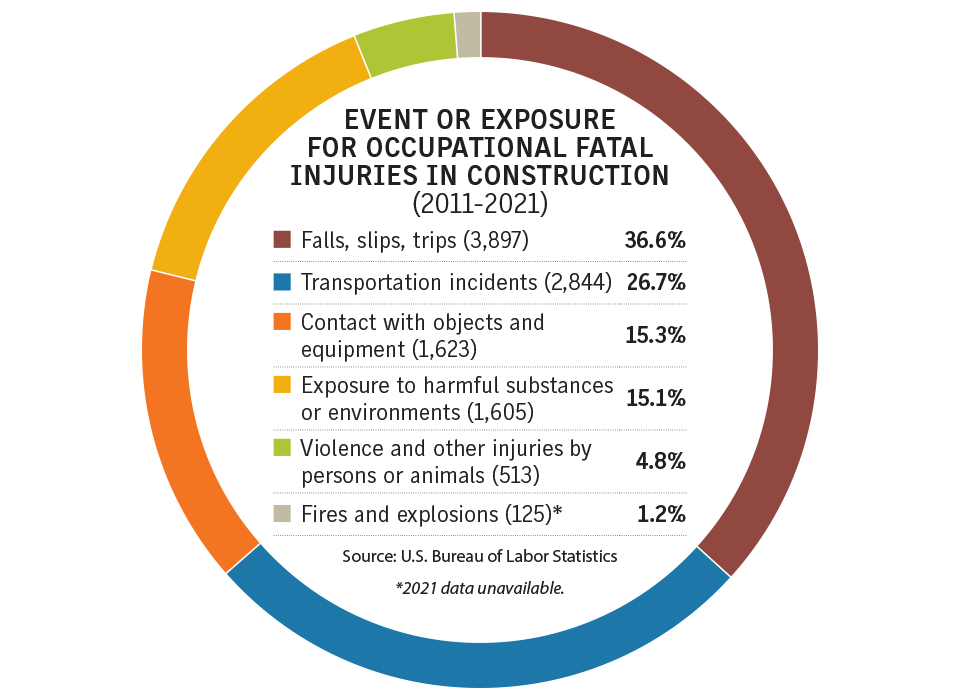Safety technology uptake slow in construction
Posted On: Feb. 16, 2023 12:00 AM CSTTechnology is increasingly being used to improve safety and efficiency on construction sites, but moves to introduce connected equipment and other resources often face barriers.
Lack of data proving the benefits of technology, costs, privacy concerns and difficulties in changing entrenched practices have limited uptake of the devices, experts say.
But given the risk of grave injuries and death among construction workers, the number of technology-based safety applications is multiplying, they say.
“Technology has taken shape,” but such applications are in their “infancy,” said Tom Grandmaison, Boston-based executive vice president and manager of construction at Willis Towers Watson PLC.
One of the biggest challenges to adopting newer technologies is explaining the benefits to construction companies, which are often budget conscious and reluctant to change established practices. In addition, lack of data showing the benefits of the new products may stymie efforts to obtain management and insurer support.
“We don’t have dozens and dozens of years of credible before-and-after-utilization-of-technology data,” Mr. Grandmaison said.
Construction technology is designed to improve everything from operational efficiency to subcontractor risk management. Among the most well-known types of technology-based equipment are wearables (see related story). Smartphone applications are another popular technology being used to improve safety.
“Today, there are a plethora of useful apps that are on the market and available to users,” said Dwayne Hartman, construction loss control lead for Kansas City, Missouri-based brokerage Lockton Cos. LLC.
Mr. Hartman said some companies use these apps, and corresponding handheld devices, to do such things as monitor the air temperature to help stave off heat-related illnesses or to warn workers about getting too close to a hazardous area at a job site.
But there are privacy concerns with certain devices that collect data related to workers.
Companies must proactively train workforces on how to use the devices and be transparent with the workers to help allay privacy concerns, Mr. Hartman said.
Wearables are used by companies in workers comp cases to show whether an employee was following proper policies and protocol at the time of a job site injury, said Kevin O’Sadnick, senior risk control manager with St. Louis-based insurance provider Safety National Corp.
It is important for companies to promote the technology in such a way that it is a benefit to workers, he said.
“It does become very important when it comes to the rollout or the way these things are described or pitched to employees,” Mr. O’Sadnick said.
For example, companies would benefit from promoting camera technology as a coaching and training tool rather than “fault-finding devices,” he said.
Despite the difficulties in introducing the products, they will likely improve safety over time, Mr. Hartman said.
“We are supportive of all of this technology,” Mr. Hartman said. “We think over time it’s going to be more beneficial than it even is today.”
Adding to the difficulty in adoption, some technologies have raised concerns with labor unions over worker privacy.
Collective bargaining agreements can stand in the way of technology adoption, said Rob McDonough, U.S. construction practice leader for New York-based broker Marsh LLC.
Richard Kennedy, U.S. workforce strategies leader for Morristown, New Jersey-based Marsh Specialty, said companies introducing new technologies need to promote the worker benefits of the devices.
“Getting the workers to understand the value of such devices to them … and that it’s not Big Brother watching over them” is important, Mr. Kennedy said. “We’re careful to hear their concerns and to listen to their concerns and to alleviate their concerns.”
Other benefits of introducing new safety technologies include associated improvements in wellness and occupational work habits, said Greg Perruzzi, New Jersey-based senior vice president-construction vertical leader for Gallagher Bassett Services Inc.
Mr. Perruzzi, who worked in the construction industry for two decades as a risk manager for some of the largest developers in the U.S., said informing the operational workforce on the benefits of technology is a key step toward adoption.
In terms of return on investment, Mr. McDonough said some companies adopting the technologies can get preferential insurance rates, although he also noted that in many cases employers are not yet seeing the “actual tangible return on invested capital.”
It is difficult to estimate when the technologies might lead to a significant reduction in comp claims, said Mr. O’Sadnick of Safety National.
“If you can show any value, you might be able to get enough legroom to roll out a pilot program … just to run it on a trial basis,” he said.
The cost of adopting a technology doesn’t simply relate to purchasing or licensing the product. Training, updating company documentation and attorney work to ensure legal compliance are other factors to consider.
And such costs of both adopting the technology and managing the change can make it difficult to justify.
“The employers have to be able to see the value in the devices,” Mr. Hartman said. “It’s safe to say it’s more cost prohibitive for smaller contractors.”

